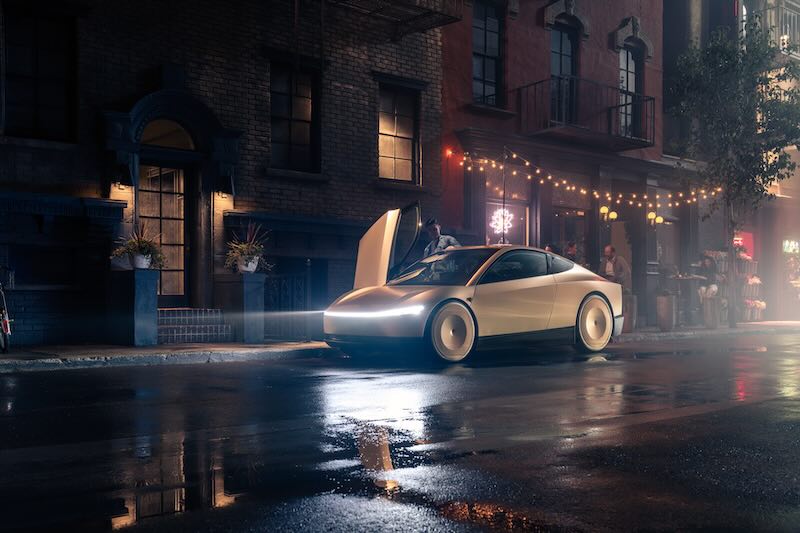Tesla’s ambitious autonomous ride-hailing CyberCab vehicle is moving from concept to reality as the first physical components appear at the company’s Texas manufacturing facility. Aerial photographer Joe Tegtmeyer, who has consistently documented the evolution of Giga Texas, captured images of what experts believe are the initial rear castings for the upcoming CyberCab.
The parts were identified through distinctive markings on storage racks labeled “RTTX” – likely meaning “Robotaxi Texas” – which differs from the “CTTX” designation used for Cybertruck components manufactured at the same facility.

These do appear to be to rear Cybercab castings
The CyberCab rear castings reveal Tesla’s commitment to weight reduction and manufacturing optimization. Engineers have stripped the design to essential elements, notably removing the innermost wheel arch section that would typically require thicker casting walls.
This approach creates two significant advantages for Tesla’s production system:
The smaller casting footprint reduces the clamping force requirements for the Giga Press machines responsible for creating these single-piece components. Each rack appears to accommodate approximately ten CyberCab castings – double the capacity used for Model Y parts and significantly more than the four-per-rack limit for the larger Cybertruck components.
This density improvement streamlines logistics throughout the manufacturing process, potentially reducing handling costs and factory floor space requirements for component storage.
The appearance of these components aligns with previous statements from Tesla’s engineering leadership. Vehicle Engineering SVP Lars Moravy indicated in a public interview two months ago that the first CyberCab prototypes would begin assembly this summer, with mass production targeted for early 2026.
The presence of actual CyberCab castings suggests Tesla is maintaining this aggressive timeline, with production equipment installation reportedly underway for several months already.
While full vehicle details remain limited, these components provide the first tangible evidence that the CyberCab is progressing from presentation slides to production reality. As Tesla continues its transformation from traditional automaker to mobility technology company, these castings may represent the first physical steps toward a robotaxi-driven future.
Related Post
Tesla Cybercab: 300-Mile Range from Sub-50kWh Battery Promises Industry-Leading Efficiency
Tesla Unveils Wireless Charging for CyberCab with 90%+ Efficiency
